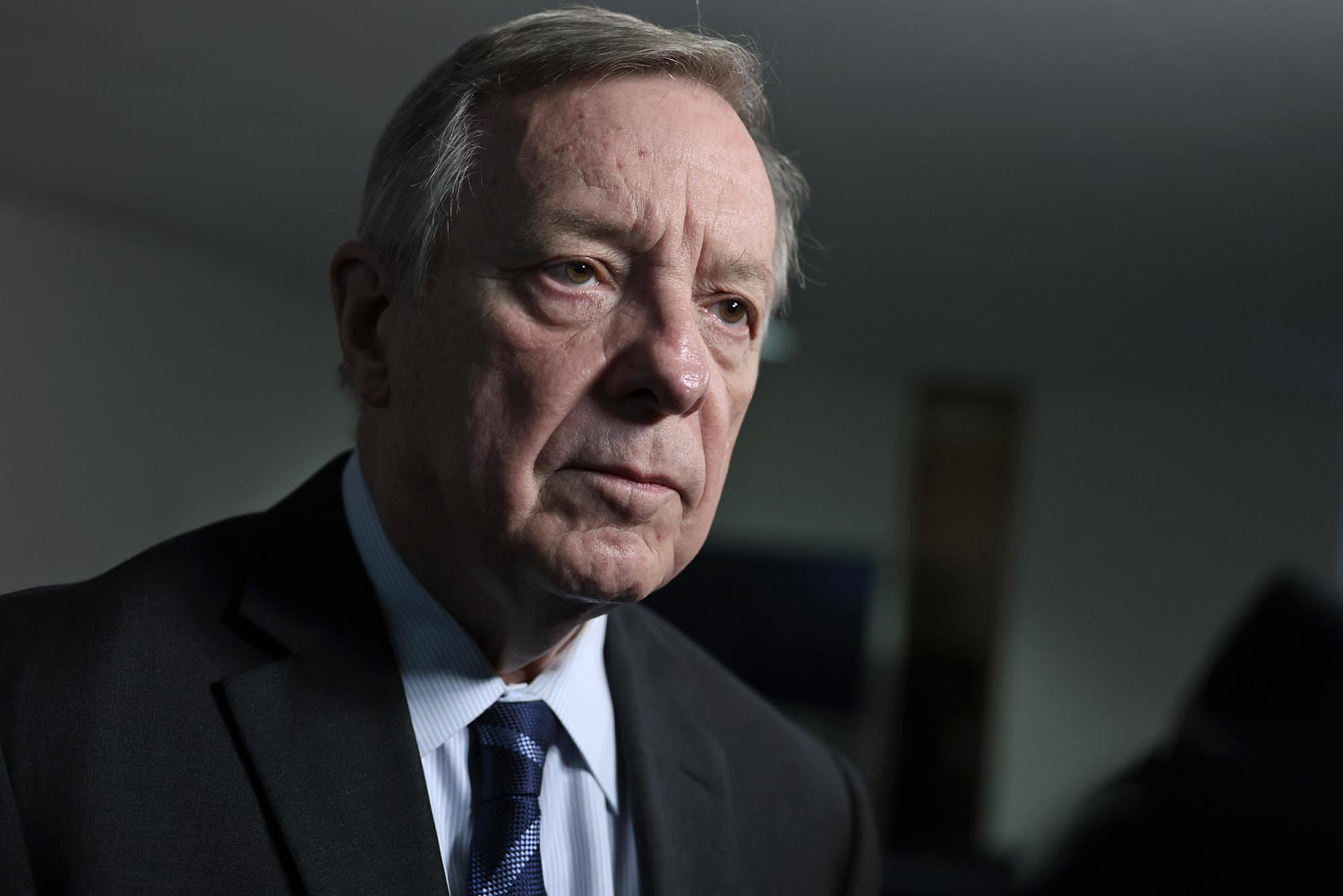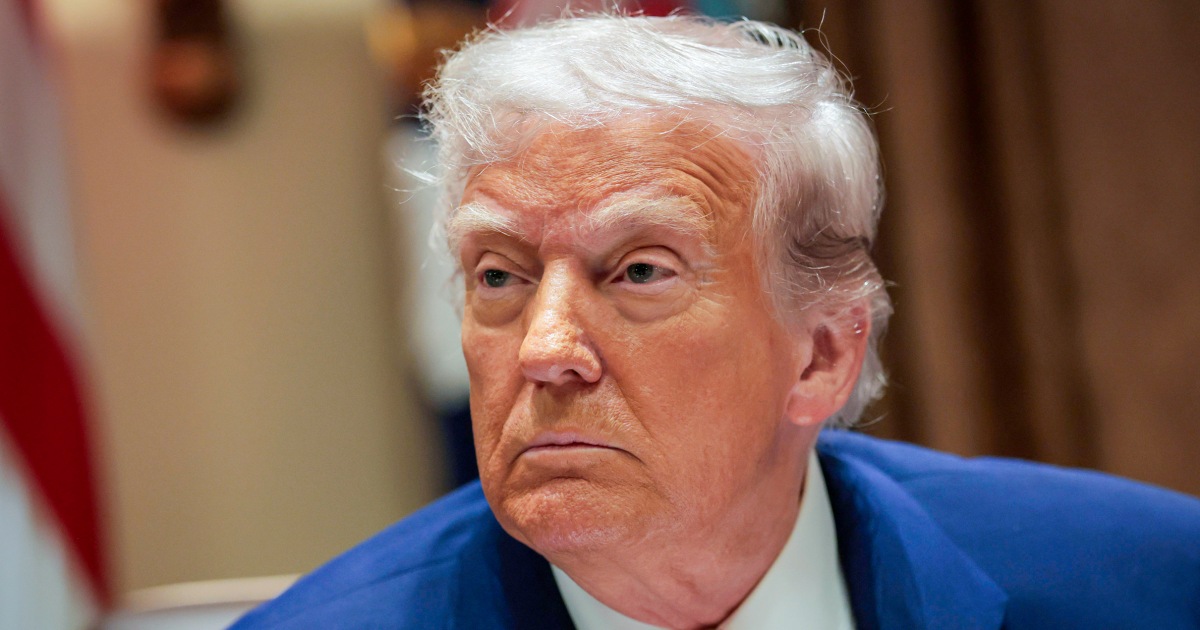
Welcome to the online version of From the Politics Desk, an evening newsletter that brings you the NBC News Politics team’s latest reporting and analysis from the White House, Capitol Hill and the campaign trail.
With another Senate Democrat announcing retirement plans, we explore the wave of younger candidates who are looking to replace them. Plus, Andrea Mitchell dives into the collapse of high-level talks to end the Russia-Ukraine war.
Sign up to receive this newsletter in your inbox every weekday here.
— Adam Wollner
🗣️ We want to hear from you!
Have a question for the NBC News Politics Desk about the Trump administration’s latest tariff moves, what comes next for the GOP’s big budget bill on Capitol Hill or the early developments of the 2026 midterm elections?
Send your questions to [email protected] and we may answer them in a future edition of the newsletter.
Senate Democratic retirements clear the way for a new generation
A growing number of Democrats in the Senate are stepping aside and clearing the way for the next generation of leaders as the party debates its path forward in the Trump 2.0 era.
The latest example came Wednesday, when Sen. Dick Durbin, of Illinois, the second-ranking Democrat in the chamber, announced he will not seek re-election in 2026 after having served in Congress for more than four decades, Sahil Kapur, Ben Kamisar and Bridget Bowman report. The decision will set off a scramble for his leadership posts in the Senate — he’s the minority whip and the ranking member of the Judiciary Committee — as well as for his seat in solidly blue Illinois.
Already, a bevy of prominent Democrats in the state have signaled their interest in replacing the Durbin, 80. Reps. Lauren Underwood (age 38), Raja Krishnamoorthi (51) and Robin Kelly (68) and Lt. Gov. Juliana Stratton (59) are all considering bids, according to sources familiar with their thinking. The winner of the Democratic primary would be a heavy favorite in the general election.
Durbin is the fourth Senate Democrat to announce retirement plans ahead of next year’s midterm elections, along with Gary Peters of Michigan, Jeanne Shaheen of New Hampshire, and Tina Smith of Minnesota, who have similarly seen a wave of younger candidates jump into the races to succeed them.
Michigan: The Democratic primary for the seat held by Peters (66) has quickly become crowded. Rep. Haley Stevens (41) is the latest candidate to jump in, joining state Sen. Mallory McMorrow (38) and former Wayne County health director Abdul El-Sayed (40).
It’s expected to be one of the most competitive Democratic primaries in the country next year. And it is likely to lead to one of the most competitive general election matchups, too, with former GOP Rep. Mike Rogers (61) running again after having narrowly lost the Senate race in the state last year.
New Hampshire: Rep. Chris Pappas (44) is the early Democratic favorite in the primary to replace Shaheen (78).
Minnesota: After Smith (67) announced her retirement, Lt. Gov. Peggy Flanagan (45) and former state Senate Democratic leader Melisa López Franzen (44) launched their primary campaigns, while Rep. Angie Craig (53) is considering a bid.
Those states will be more competitive in a general election than Illinois, so securing the Democratic nomination won’t provide a glide path to the Senate. But the open-seat primaries could pave the way for the sort of youth movement some Democrats have argued is needed to reinvigorate the party ahead of the 2026 and 2028 elections.
Side note: Democrats will also aim to defend the youngest member of the Senate next year: 38-year-old Jon Ossoff of Georgia is expected to be Republicans’ top target on the map.
U.S. peace plan leaves Ukraine on edge
By Andrea Mitchell
U.S. peace talks to end the war in Ukraine appear to be near collapse, with President Donald Trump lashing out at Ukrainian President Volodymyr Zelenskyy for not accepting a U.S. proposal that is widely viewed as favoring Russia.
The U.S. plan would let Russia keep Crimea, Ukrainian territory that Russia occupied in 2014, and prevent Ukraine from joining NATO. In a one-two punch, Vice President JD Vance, traveling in India, threatened that the United States would walk away from the talks if the two sides didn’t accept the U.S. terms, which would be a territorial and military victory for Russian President Vladimir Putin.
Zelenskyy told The Wall Street Journal that giving up Crimea would violate Ukraine’s constitution. And he asked what concessions Russia would make if Ukraine gave up hopes of becoming a member of NATO. While Zelenskyy has agreed to a 30-day ceasefire, Russia has not.
Secretary of State Marco Rubio and special envoy Steve Witkoff were to hold talks Wednesday with Ukraine, England, Germany and France in London, but Rubio and Witkoff canceled at the last minute. That led European foreign ministers to also drop out, downgrading the talks to a meeting of technical experts.
“If at some point we determine that if we’re just too far apart and not enough movement is happening, we may need to move on to other priorities, because there are a lot of important things happening in the world,” Rubio said. “This is not our war. We didn’t start this war.”
Trying to smooth over the impasse, Zelenskyy said later in a statement: “Emotions have run high today. But it is good that 5 countries met to bring peace closer. … The American side shared its vision. Ukraine and other Europeans presented their inputs. And we hope that it is exactly such joint work that will lead to lasting peace.”
The White House says Witkoff will go to Moscow this week for his fourth meeting with Putin. Trump had promised he would end the war within 24 hours of taking office.
🗞️ Today’s top stories
- 📈 Market watch: U.S. stocks ended the day higher but saw earlier gains evaporate as investors measured White House officials’ softening tariff and trade stance against hard-line postures other countries continued to signal. Read more →
- 🗣️ Biden on the brain: Trump has continued to fixate on his former election opponent, mentioning former President Joe Biden, his family or his administration at least 580 times in remarks and on social media since he took office. Read more →
- 📺 Friendly advice: Sen. Kevin Cramer, R-N.D., a member of the Armed Services Committee, told CNN that he remains confident Pete Hegseth will be a “great” defense secretary but that he will “need some help around him.” Read more →
- ➡️ Deportation fallout: Illinois Gov. JB Pritzker announced he’ll direct several state agencies to review their ties to El Salvador in the wake of what his office called “aiding the Trump administration’s unlawful and unconstitutional actions.” Read more →
- 📳 Incoming call: Democratic Pennsylvania Gov. Josh Shapiro said Trump called him over the weekend to discuss the recent arson attack on the governor’s home. Read more →
- 🐾 DOGE days: Texas became the latest state to launch its own version of DOGE, with GOP Gov. Greg Abbott signing a bill to create a permanent state agency — called the Texas Regulatory Efficiency Office — dedicated to streamlining government. Read more →
- 👀 Conspiracy corner: Sen. Ron Johnson, R-Wis., said he wants to hold congressional hearings on a debunked conspiracy theory about Sept. 11, saying there are “an awful lot of questions” about the deadliest terrorist attack in U.S. history. Read more →
- Follow live updates →
That’s all From the Politics Desk for now. Today’s newsletter was compiled by Adam Wollner and Bridget Bowman.
If you have feedback — likes or dislikes — email us at [email protected]
And if you’re a fan, please share with everyone and anyone. They can sign up here.


















